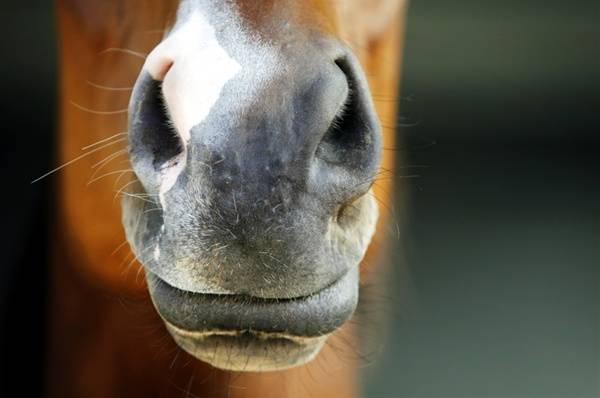| Equine Herpes Virus Outbreaks |
| There have been multiple small outbreaks of Equine Herpesvirus Myeloencephalopathy (EHM) in California over the last 2 years. Recently an outbreak has occurred in Riverside County (Desert International Horse Park in Thermal) resulting in humane euthanasia of one horse. Equine Herpes Virus (EHV-1 and EHV-4) is relatively common in the horse population and most frequently causes mild respiratory disease infection in horses. It can also cause abortion in mares, neonatal foal death and neurological disease. The neurological form of EHV, known as Equine Herpes Myeloencephalopathy (EHM), is not common (less than 10% of cases in an outbreak). Abortion (late term/third trimester) outbreaks can have attack rates in excess of 50%. Transmission: EHV-1 is spread from horse to horse through contact with nasal discharge or spread as aerosol droplets. Horses can also contract the virus by coming into contact with contaminated surfaces such as stalls, water, feed, tack, and transport vehicles. Humans can spread the virus from horse to horse by contaminated hands and clothing. It is unknown why this virus develops into neurologic disease in some horses. Incubation period: Ranges from 5 to 6 days. Horses can shed the virus during the incubation period. Infected horses are carriers and can shed the virus even when showing no clinical signs. An estimated 40-60% of infected horses can become lifelong carriers of EHV-1. Clinical signs: • Fever- This virus typically causes a biphasic (two phase) fever. The horse will have fever on day 1 or 2 and again on day 6 or 7. Neurological signs may not present until the second fever. Some horses may not develop a fever. Clinical signs include Nasal discharge, Depression, Incoordination, Hind limb weakness, Loss of tail tone, Loss of bladder tone- urine dribbling or inability to urinate, leaning against a fence or wall to maintain balance, Recumbency- inability to rise. Diagnosis: The diagnosis is made by having a veterinarian collect nasal swabs and whole blood from the horse which are then submitted for laboratory examination. Treatment: There is no cure for EHM. Supportive care is administered including the use of nonsteroidal anti-inflammatory drugs (NSAIDS) such as Bute or Banamine to reduce fever, inflammation, and pain. Prognosis: Prognosis for horses that test positive for EHV and then develop neurologic signs of EHM is often poor with fatality as high as 30%. In a percentage of cases, horses with neurologic signs can recover from the infection but may retain neurologic deficits. Older horses are generally more susceptible to EHM in an outbreak. Prevention: Currently, there is no vaccine which is proven to protect against the neurological disease associated with EHV-1. The best method of protection is always to maintain current EHV vaccinations on all horses on your property and to follow correct biosecurity protocol when bringing new horses onto your premises, when traveling, or during any activity where horses may come together. Vaccination remains the optimal means to prevent infectious diseases in many circumstances; however, there is no evidence that current vaccines can prevent naturally occurring cases of EHM. |



One response
Excellent.